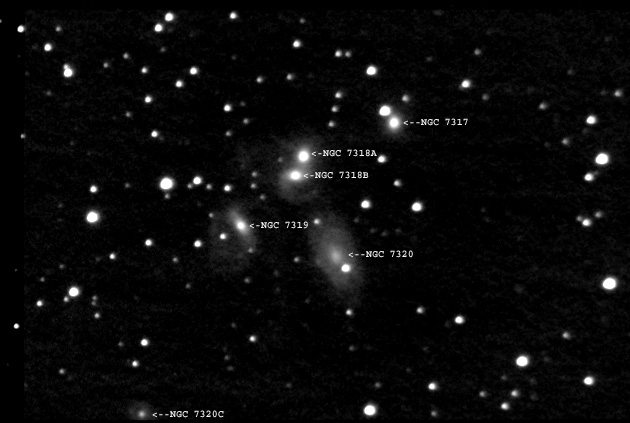Stephan's Quintet
Stephan's Quintet is an apparent grouping of five galaxies in the constellation Pegasus. The brightest member of the group is NGC 7320, a spiral galaxy which is undergoing extensive star formation. But this object is actually not physically close to the others, lying only about 40 million light years from Earth, while the other 4 members are about 290 million light years distant. These galaxies have produced widespread interest among astronomers because they are presently colliding and will likely merge to form a single larger object in the future. At the present time, it is believed that one member of the group, NGC 7318, is falling into the center of the group at several million miles per hour. This object reveals a double nucleus on photographs and as one of these nucluei collides with gas in the group, a powerful shock wave spreads through the space between the members. An unexpected discovery of powerful molecular hydrogen has been observed in this shock wave. It was thought that molecular hydrogen could not suvive in such a shock wave. For this reason, Stephan's Quintet has been widely studied for years. Many astronomers believe that this collision can help provide a view into what happened in the early universe some 14 billion years ago. Note that due to underexposure on my image below, there are large amounts of nebulosity around the nuclei of these objects that
is not displayed here.
 |
| Image taken Oct. 6, 2013, with the C-14 operating at F:11 - total exposure is 37 1/2 minutes, with the ST-8 binned 2 X 2. |